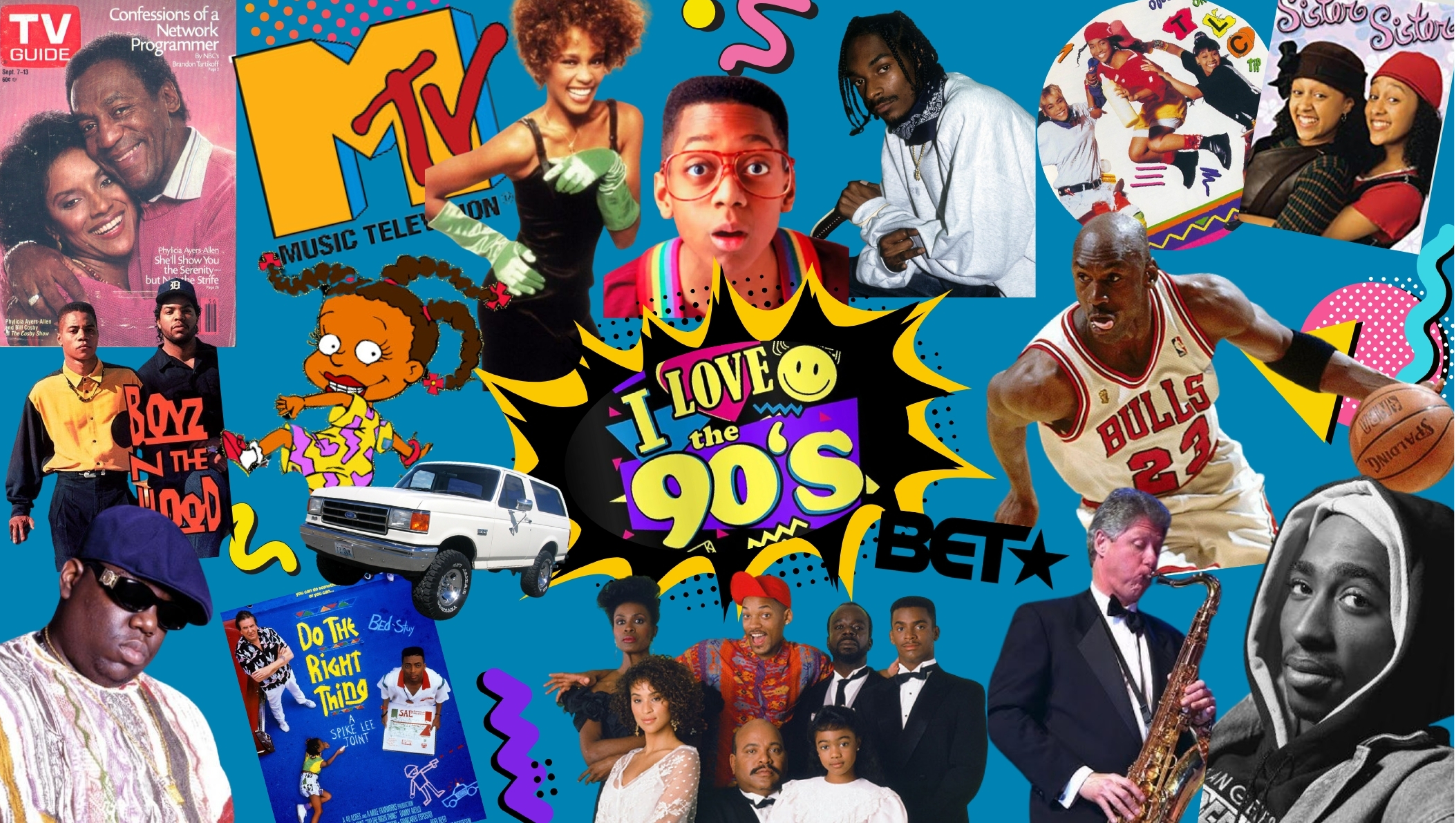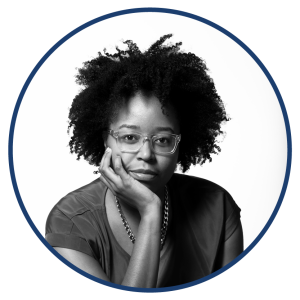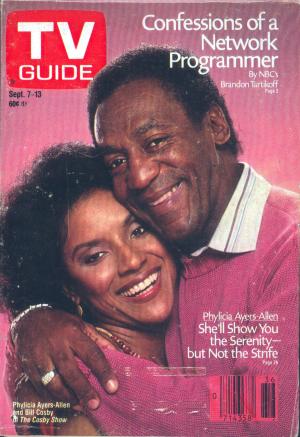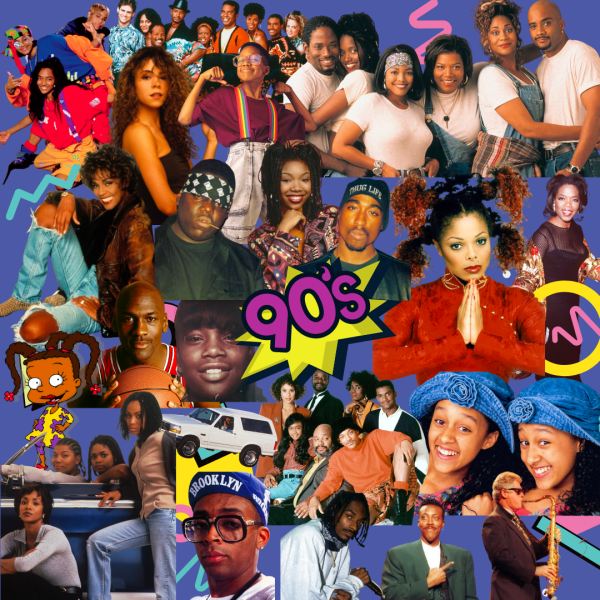
By Nikki Babri
Baggy jeans, crop tops and platform shoes fill UC Irvine’s campus walkways as students embrace ‘90s and Y2K fashion trends. But while students are drawing aesthetic inspiration from the 1990s, a course in the School of Humanities invites them to examine how the decade’s political decisions and cultural movements shaped the America we live in today.
In “‘90s Black Popular Culture,” students explore how the era’s artists and creators responded to major policy shifts through film, music and television. The course, offered jointly by the Departments of Film and Media Studies and African American Studies, reveals how these creative works continue to resonate three decades later. For both international students and those educated in American schools, the course fills critical gaps in historical knowledge often glossed over in traditional curricula.

Assistant Professor of Film and Media Studies Philana Payton challenges misconceptions about courses focused on marginalized communities. “This is an American history course,” she asserts. “We’re not checking a box for diversity and inclusion. We’re using primary sources and peer-reviewed research to examine a critical period in our nation’s history.”
From politics to pop culture
The 1990s marked an unprecedented shift in American culture, particularly in the emergence and mainstream success of Black creative voices. While students may recognize iconic ‘90s rappers, television shows and sports figures, the course provides a crucial context for the ways in which Black artists documented how major policy decisions impacted communities of color.
“There was a huge influx of Black popular culture at one time, which had never been seen on the globe,” Payton explains. “It was a time of experimentation for Black creators who, for the first time, could establish their own voice and style based on their experiences and how they defined what was authentic to them.”
The era’s influence can be seen far beyond entertainment. The course, rather than focusing on isolated historical events, examines their broader social, political, economic and cultural reverberations. Students begin by examining the Reagan era and its lasting effects on American society, particularly through economic policies – from trickle-down theory to welfare reform – and coded language that demonized Black communities and shaped perceptions of race and class.

Catherine Cordova, a senior majoring in philosophy and minoring in African American studies and humanities and law, found that studying this period signaled a turning point in how politics and media intersect. “Reagan represents the beginning of a new era, one where political campaigning became acting,” she explains.
Students quickly recognize how this merging of politics and performance set lasting precedents. “The rhetoric and policies reflect much of what students recognize in our current political situation,” Payton affirms. “And all of these seemingly disparate conditions have a direct relation to policy.”
Tracing these influences through the presidencies of George H.W. Bush and Bill Clinton, students uncover unexpected connections between foreign and domestic policy. They learn that the Iran-Contra affair’s covert operations, for example, contributed to the crack epidemic that devastated urban communities in the 1980s and ‘90s. Similarly, decisions made during the Persian Gulf War amid Bush’s presidency shaped America’s ongoing relationships in the Middle East. And despite projecting a progressive image, Clinton’s administration implemented policies, including the “three strikes” crime bill, that dramatically expanded mass incarceration and moved the Democratic party further right.
The past is never past
For current students, most born years after the events they’re studying, the course exposes surprising parallels between past and present. While some encounter fragments of this history through contemporary media – glimpsing aspects of the Iran-Contra affair in shows like Snowfall or in video games like “Call of Duty: Black Ops” – the course helps them understand that current social movements and political debates have deep historical roots.

The course transformed student Andrew Cervantes’s understanding of ‘90s Black popular culture. The film and media studies major discovered that behind the era’s entertainment value lay powerful stories of resistance. “Not only did these artists, athletes and movie stars have a tremendous impact on future generations, but their success represents a determined struggle against a system that continues to work against them,” he shares.
Watching films like Spike Lee’s Do the Right Thing (1989) and John Singleton’s Boyz N the Hood (1991), students discover how filmmakers documented and criticized systemic issues that remain relevant. When viewing Do the Right Thing’s portrayal of police violence against the character Radio Raheem, students immediately connect it to events they witnessed during the 2020 protests following George Floyd’s murder. In the same vein, Boyz N the Hood’s depiction of police brutality and systemic racism resonates with current conversations about racial justice.
“They’re shocked and appalled that films from over thirty years ago so closely mirror what happened in 2020,” Payton explains.
Holding space for nuance

A key class discussion examines The Cosby Show, challenging students to analyze how media representation can be simultaneously positive and problematic. Through a structured debate, students explore how the show embodied both the possibilities and limitations of Black representation in mainstream media during the 1990s.
While the series achieved unprecedented global success and broke new ground in its portrayal of a Black middle-class family, its deliberate avoidance of racial issues and idealized representation had unintended consequences. Critics argue that The Cosby Show’s focus on respectability and middle-class success allowed viewers and politicians to overlook the harsh realities many Black Americans faced during the crack epidemic and dismiss the systemic barriers and economic challenges present in Black communities at the time.
The debate helps students move beyond simple “good” or “bad” assessments of cultural works, instead analyzing them within their complete historical context. As Payton emphasizes, understanding these complex moments requires considering multiple perspectives simultaneously, making room for nuance.
Navigating complex conversations
Because the course tackles challenging historical moments and their ongoing impact, Payton regularly checks in with students and is mindful to create a space where students can engage thoughtfully with the difficult material.
Cervantes finds Payton’s approach to be instrumental in creating an engaging and protective learning environment. “We cover very heavy themes in this class, and Professor Payton gives us room to explore these themes safely and properly – especially in light of the current social and political climate,” he shares.
Despite the heaviness of many subjects, the course ultimately celebrates the creative resilience of Black artists and performers who produced enduring, meaningful work during challenging circumstances. “In the midst of such chaos and structural oppression, we see that people will still create,” Payton explains. “The work they create is impactful and long-standing, which is why we’re watching things from the ‘90s and listening to albums that spoke to the social conditions of the time that still feel relevant.”

Students further engage with the course material through multimedia final projects and have the freedom to analyze any socio-political event that made a mark in the ‘90s. Former students centered their projects on the Wu-Tang Clan, Black R&B girl groups and the infamous O.J. Simpson trial. Cordova will explore the prescient social commentary of two influential artists, Tupac Shakur and Lauryn Hill, while Cervantes is interested in examining the passive centrism and social neglect of Black billionaires, focusing specifically on basketball legend Michael Jordan.
By examining history through the lens of race, class, gender and sexuality, Payton aims to impart essential analytical and media literacy skills for navigating today’s complex information landscape. Students learn to evaluate sources critically, fact-check claims and consider multiple perspectives simultaneously, which proves particularly valuable as students grapple with contemporary issues that echo historical patterns.
“People are looking for ways to understand how we got to where we are today, and how we can get through where we are today,” Payton reflects. “This history is a really important aspect of that.”
Interested in reading more from the School of Humanities? Sign up for our monthly newsletter.
